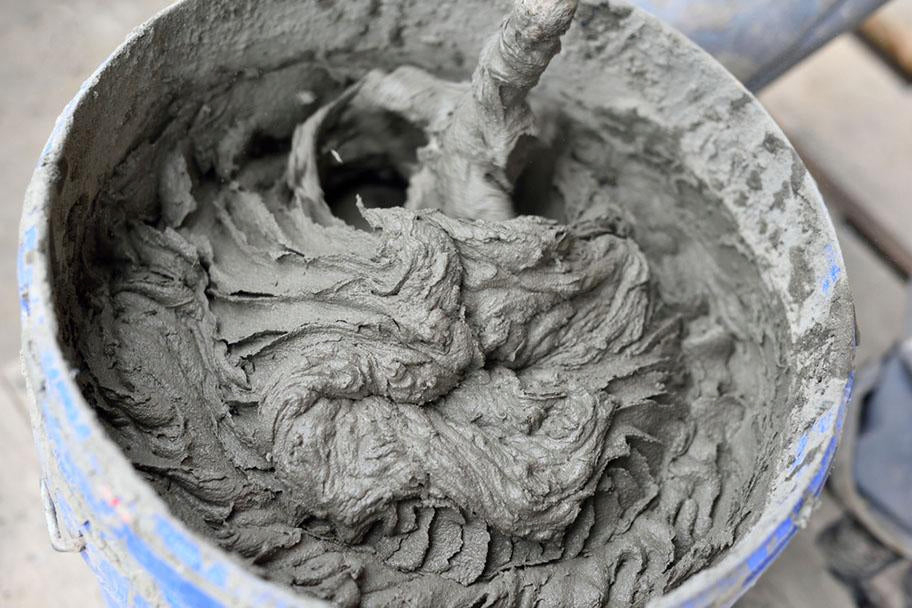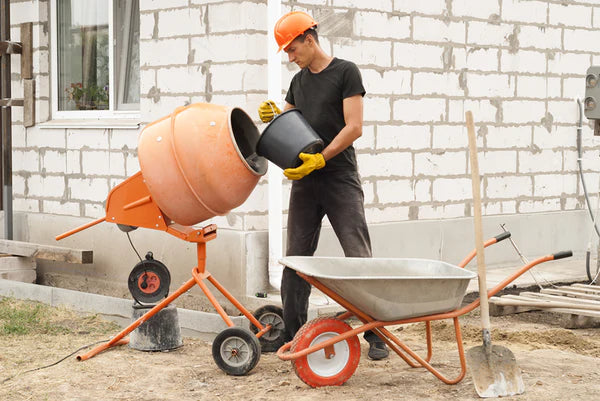Source: Avigator Fortuner/Shutterstock.com
Concrete is truly an incredible material that comes with a host of amazing benefits—it’s extremely durable, low-maintenance, and versatile. It’s also naturally resistant to fire and temperature fluctuations. Most impressive, though, is concrete’s transformative nature. It has the unique ability to go from an easy-to-transport powder to a strong, foundational building material all in a matter of minutes. And that’s all made possible by mixing.
When you buy concrete, it’s packaged in powder form in a paper bag or bucket. This allows it to be transported in a lighter, more efficient manner from the hardware store to the jobsite. Before use, it must be properly mixed according to the manufacturer’s instructions in order to develop into a strong, workable material that serves your needs. In this guide, we’re going over the different ways to mix concrete, as well as some key preparation tips to help ensure that you get the best possible mix every time.
Ways to Mix Concrete
The tools needed for mixing concrete depend on your preferred method of mixing. Generally, there are three different ways to mix concrete (outlined below). For each of these methods, safety precautions should be top of mind. Make sure you wear a dust mask or face shield and eye protection to prevent dust and concrete particles from getting in your system. Always wear heavy-duty rubber gloves to protect your hands.

Source: Dmitrii Pridannikov/Shutterstock.com
-
By Hand – Ideal for small jobs and do-it-yourself applications, hand-mixing concrete is a simple way to whip up batches as you go. To mix by hand, you’ll need two five-gallon buckets, one for the dry concrete mix and one for the water. You may also prefer to use a wheelbarrow or wheeled container for your mixed concrete so it’s easier to move after it has been mixed. Follow the instructions on the packaging, but here’s an idea of the process:
- Cut open the bag and empty its contents into your bucket, mixing trough, mud pan, or wheelbarrow.
- Gradually add measured water according to the manufacturer’s instructions, adding a little bit at a time.
- Gradually wet the mix using a mortar hoe or a ladle, mixing thoroughly and making sure to work out any dry pockets.
- Don’t add more water than is recommended. Instead, scrape up the edges and corners of the container to soak up the extra moisture.
- With a Mixing Drill – The perfect choice for the avid do-it-yourselfer or professional who’s just starting out, a concrete mixing attachment for your power drill is a great option. Essentially, the process of mixing with a drill is the same as mixing by hand, only you save yourself a ton of time and energy because the drill and mixing attachment do all the work.
- With a Concrete Mixer – If you’re a professional who does a lot of concrete-based projects at home, it’s worth your while to invest in a concrete mixer. These heavy-duty, commercial-grade mixers are self-contained units that combine the receptacle and mixer attachment for a perfectly mixed, consistent batch every time. These units work quickly and allow for hands-free mixing so you can prep other things while your concrete is mixing.
Shop Our Concrete & Masonry Tools

Source: Kuchina/Shutterstock.com
Concrete Mixing Tips
Regardless of how you mix, you’re looking for the same result—a strong, durable batch of concrete that’s easy to work with and which won’t set before you get to use it. Here are some of our top tips for making that happen:
- Mix up the concrete materials before putting any water in. This ensures that all the materials are well-dispersed and that the chunks are broken up.
- Aim for the right consistency. Ideally, you want the mixed concrete to be neither dry nor soupy. Aim for a consistency similar to cookie dough or a thick peanut butter. A fistful of properly mixed cement should hold its shape in your glove.
- Constantly wash your tools and your hands. As you know, air plus time plus wet concrete equals a sidewalk. Make sure to clean off your tools immediately.
Concrete is an invaluable material in the contractor’s arsenal. It’s tough, long-lasting, and surprisingly easy to work with. Use this guide to perfect your concrete mixing technique and master the material for a professional-looking result.

